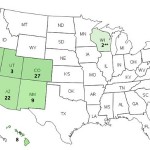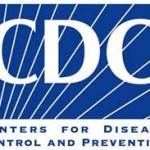The Durand School District is continuing to reschedule various student activities as the western Wisconsin community grapples with a sweeping outbreak of Campylobacter food poisoning. According to the official school calendar, Monday's C-squad and junior varsity Panther football games against Amery have been canceled. Meanwhile, school volleyball matches canceled last week have been rescheduled for Thursday. The moves were made as the Wisconsin State Laboratory of Hygiene continues to offer testing for any ill students and staff. The most recent school district announcement notes that the source of the outbreak is still actively under investigation by the Pepin County Health Department and the Wisconsin Department of Health Services. "To date, Campylobacter has been detected in multiple … [Read more...]
TATFAR Study on Antimicrobial Resistance Frightening
Foodborne illness resulting from organisms that are resistant to antibiotics is an emerging problem and a facet of a much greater challenge that threatens the health and safety of entire populations. As a result of the threat from Antimicrobial Resistance (AMR), the U.S. Department of Health and Human Services (HHS) and the European Commission formed the Transatlantic Taskforce on Antimicrobial Resistance (TATFAR) and recently issued a report outlining the problems posed by AMR and the goals of the Taskforce intended to address them. Antimicrobial agents, including even the newest and most powerful drugs will, over time, be rendered ineffective, according to the report, “by the remarkable ability of bacteria to become resistant through mutation or acquisition of resistance genes from … [Read more...]
Two USDA Agencies Collaborate on Outbreak Cause Assessment
Two US. Department of Agriculture agencies are going to collaborate on an effort to assess the root cause in foodborne illness outbreaks in the U.S. Every year in this country, 48,000,000 people are sickened with a foodborne illness, 128,000 are hospitalized, and 3,000 die. The Food Safety and Inspection Service (FSIS) and the Animal and Plant Health Inspection Service (APHIS) have signed a Memorandum of Understanding (MOU) that details the responsibilities and roles of each agency. The assessments include observational study design, questionnaire development, collection of data and samples, and statistical analysis and reporting. Those facets are all included in the investigation of a foodborne illness outbreak. The assessment team will also provide "frequent, descriptive updates" … [Read more...]
Possible Foodborne Illness Outbreak at Minnesota Lion’s Club
The Minnesota Department of Health is investigating a possible foodborne illness outbreak at a Nisswa Lion's Club meeting held at the Nisswa Community Center on March 24, 2014. The investigation is ongoing and not much information is available, according to the Brainerd Dispatch. The meal was catered by Red, White and Blue Catering of Nisswa. About 35 people ate the buffet meal, and some reported vomiting and/or diarrhea after the event. The DOH does not have a complete list of food items served at the event. Investigations can take a few weeks. Investigators must interview those sickened, take environmental samples, collect food samples, if any, test food for possible bacteria or viruses, and look at samples from patients to determine the outbreak cause. If they do find a common … [Read more...]
Suspect Food Poisoning? State Contact List is a Good Place to Start
If you or someone you know has been exhibiting the symptoms of food poisoning, you (or your doctor) should contact your state or city health department. FoodSafety.gov has a map with links to all of the state, commonwealth, and territory health departments to get you started. When two or more people have the same illness from the same contamianted food or drink, the illnesses are officially classified as an outbreak. Since most cases of foodborne illness are not reported, it's crucial that if you did get sick from food served at a restaurant or event, you tell public health officials about it. For instance, Salmonella outbreaks are usually underreported by a factor of 30. If an official Salmonella outbreak case count stands at 100, there are likely 3,000 people who are actually sick in … [Read more...]
CDC Releases Surveillance for Foodborne Disease Outbreaks
The Centers for Disease Control and Prevention (CDC) has released its Surveillance for Foodborne Disease Outbreaks in the United States from 1998 to 2008. This data describes the number of illnesses, hospitalizations, and deaths from contaminated food and water. During that time frame, there were 13,405 foodborne disease outbreaks, which resulted in 273,120 cases of illness, 9,109 hospitalizations and 200 deaths. Note that these numbers are much smaller than the 48 million illnesses estimated every year; that's because most foodborne illnesses are not reported to public health officials. Of those outbreaks, 7,724 had a known contaminated food or ingredient. The commodity most implicated were poultry, fish, and beef. The pathogen-food combinations most responsible for outbreaks were … [Read more...]
White House Threatens Veto of House Agriculture Appropriations Bill
In a Statement of Administration Policy issued June 25, 2013, the White House stated it strongly opposes House passage of H.R. 2410, making appropriations for Agriculture, Rural Development, FDA, and Related Agencies programs for the fiscal year ending September 30, 2014. The Statement reads "it imposes harmful cuts in rural economic development, renewable energy development, nutrition programs, food safety, agricultural research, and international food aid. If the President were presented with H.R. 2410, his senior advisors would recommend that he veto the bill." The deadline for action on this issue passed more than two months ago. Congress has still not appointed conferees and agreed on a budget resolution. The White House said they are "deeply concerned that the WIC funding level … [Read more...]
Children in Poverty Face Greater Food Safety Risks
A new report by the Consumer Federation of America finds that children from low-income families are at greater risk for foodborne illness and unintentional product injuries than children from higher-income families. The report, titled Child Poverty, Unintentional Injuries and Foodborne Illness: Are Low Income Children at Greater Risk? concluded that researchers must collect better data on the relationship of family income to foodborne illness incidence. More than 2/5 of the 73 million children in America are from low-income families. The report was based on data collected through FoodNet, the CDC's national foodborne illness surveillance system. According to that data, children under the age of 15 account for half of all foodborne illnesses in this country. Children under the age of 5 … [Read more...]
Most Consumers Don’t Wash Their Hands Correctly
A study published in the Journal of Environmental Health found that only 5% of consumers wash their hands correctly. Scientists trained 12 college students in the field of data collection. They then observed 3,749 people washing their hands in public toilets. The observers found that 15% of the men and 7% of women didn't wash their hands at all. Only 50% of men and 78% of women used soap. People were less likely to wash their hands if the sink looked dirty, and more likely if a sign telling people that hand washing is a good idea was hanging above the sink. And for some reason, more people wash their hands during the day than at night. The Centers for Disease Control and Prevention says that hand washing is crucial to avoid spreading foodborne illness and other infections. If … [Read more...]













